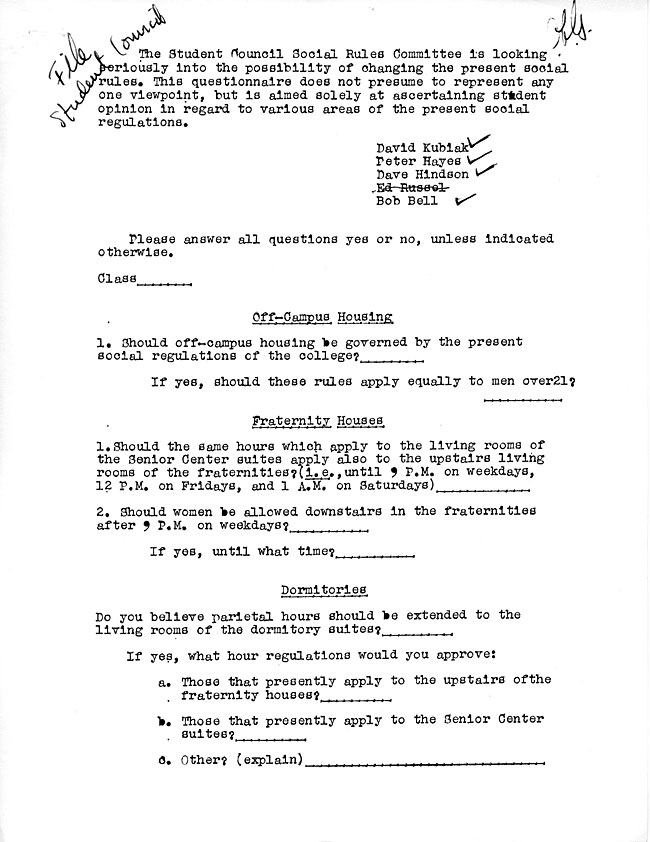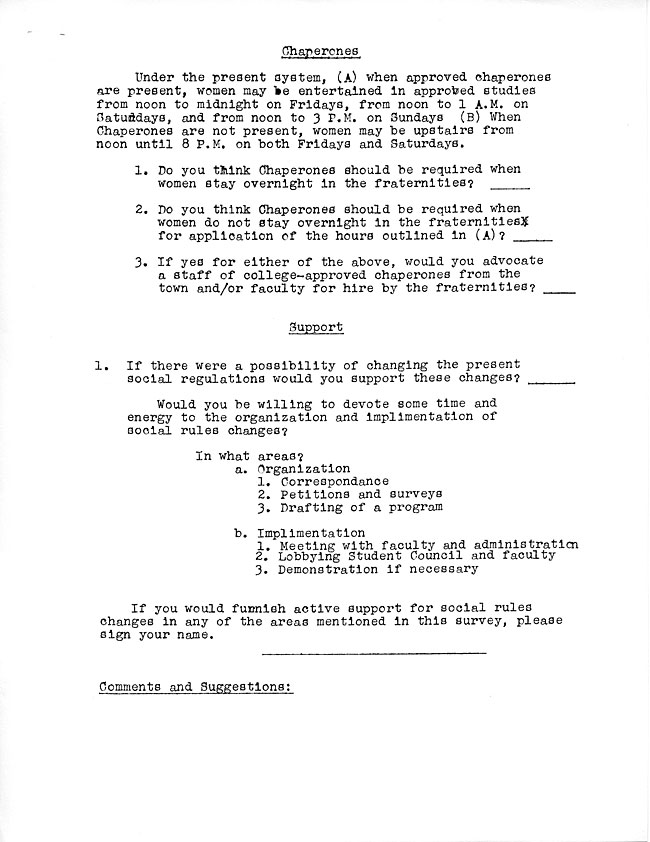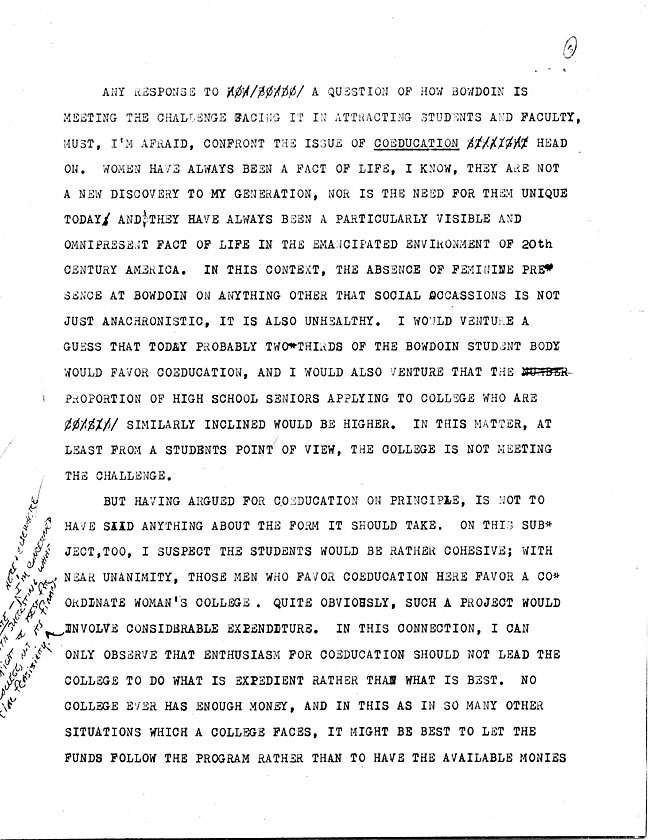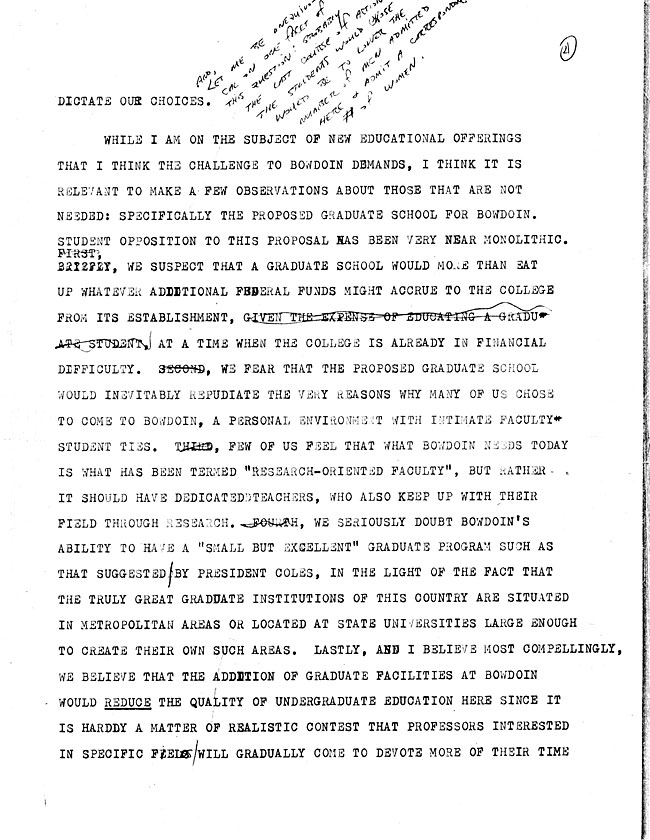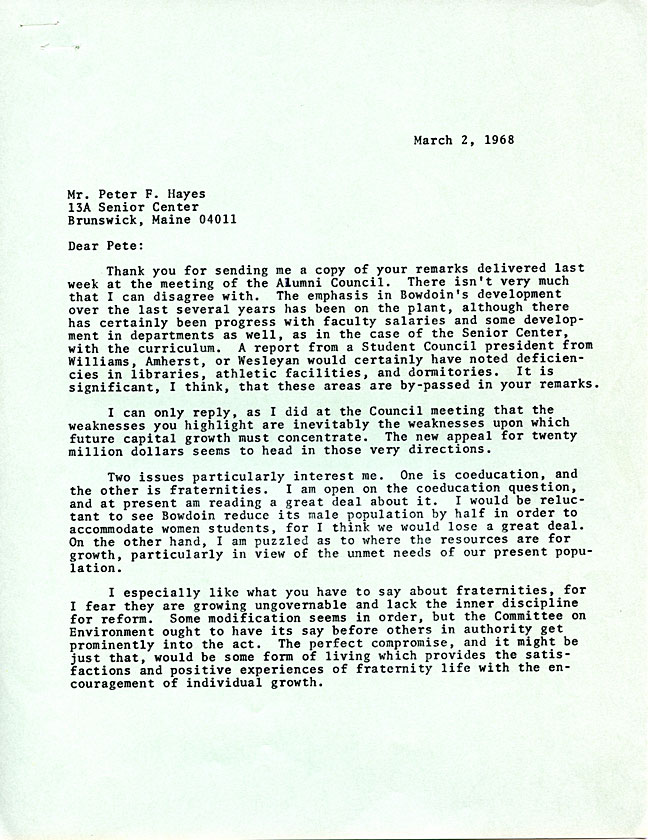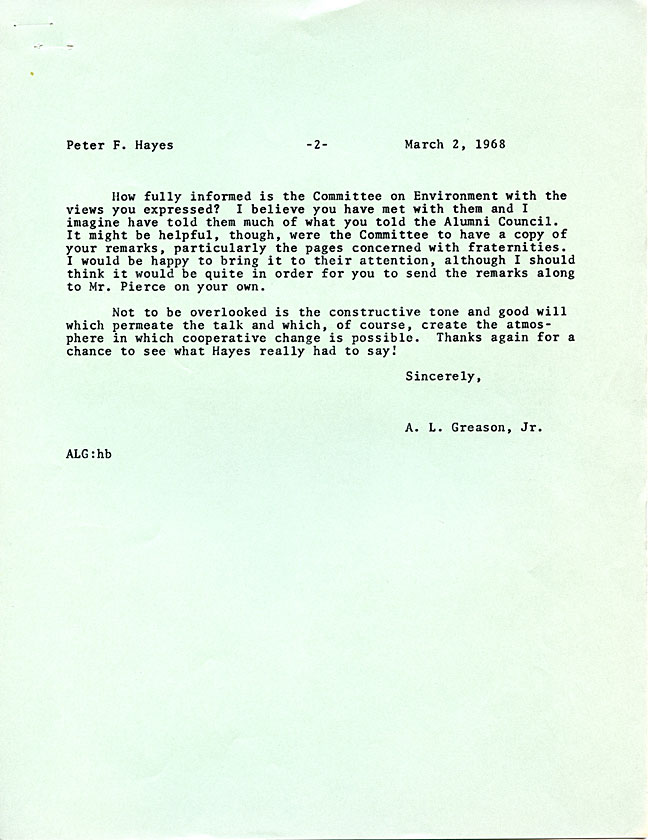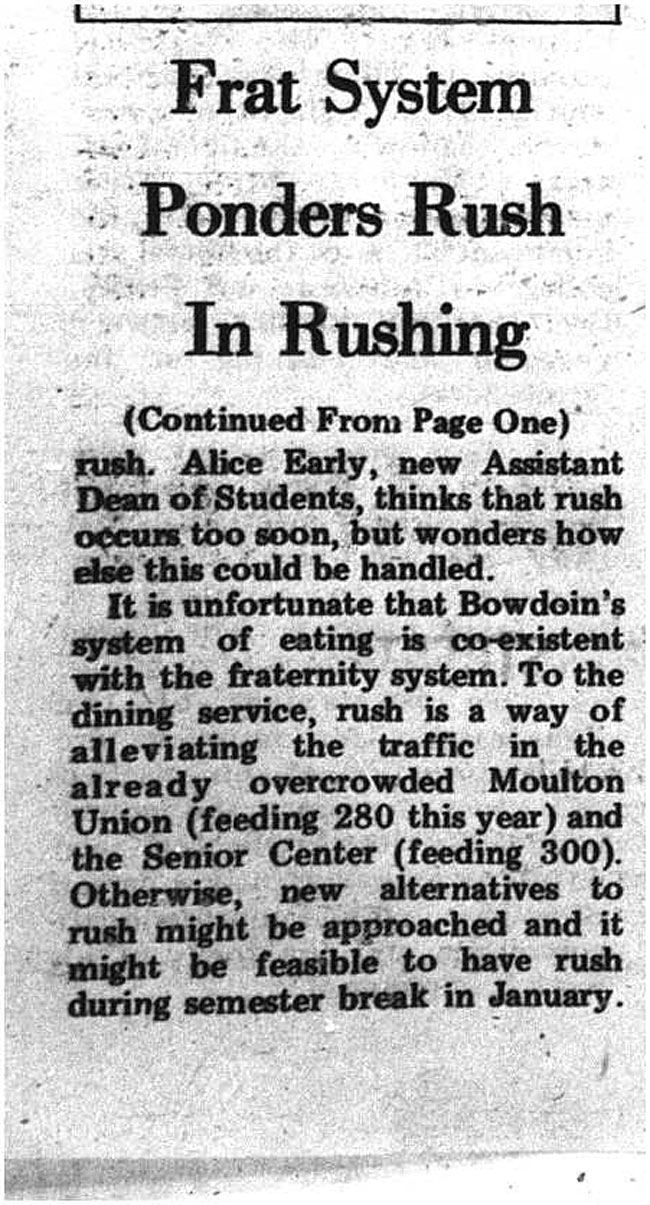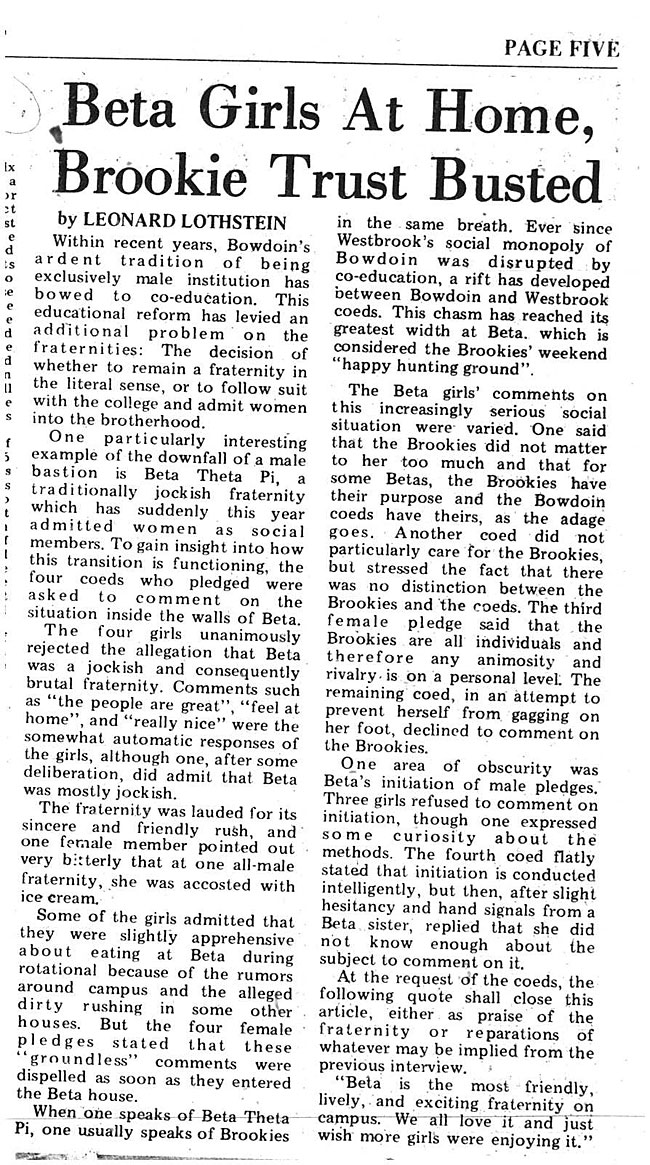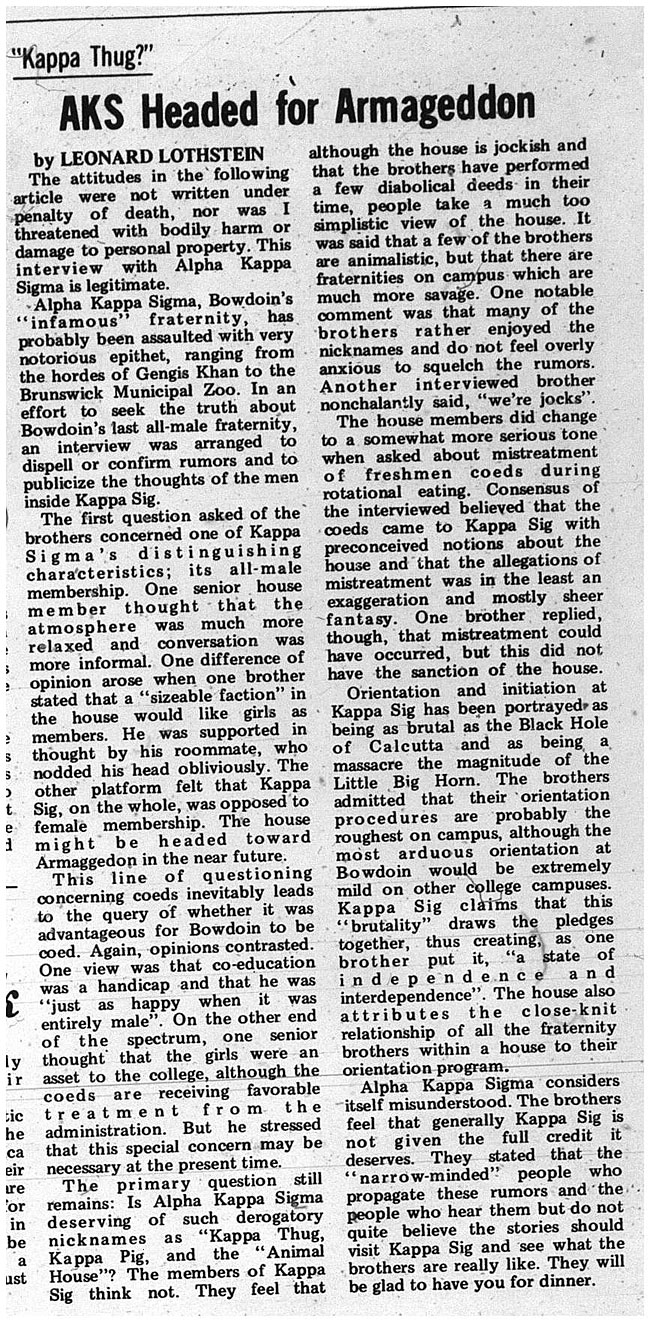Through this questionnaire (Document AW, 43), which was distributed to 300 students before the 1966 fall semester, the Student Council Social Rules Committee investigated student attitudes towards the College’s existing parietal rules, particularly as they pertained to women visitors on the then-all-male campus. The Social Rules Committee intended to take student responses to the questionnaire under advisory as it determined the future of parietal rules on campus—that is, those in loco parentis restrictions that fulfilled the College’s perceived “obligation to provide a moral environment” for its students (Peril, 174).
The questions reveal the existing dormitory and fraternity house social rules (which differed slightly from one another), as well as the College’s tendency to solicit student input before making broad policy decisions, which continues to this day. Women visitors were allowed in common living areas in fraternity houses and dormitories, although they were require to have “approved chaperones.”
Bowdoin’s campus rules at the time were slightly more strict than those of some other all-male institutions. For example, at Columbia University, women visitors were allowed in male students’ bedrooms without chaperones “on alternate Sundays, as long as the door was left open the ‘width of a book,’ which at least one student interpreted as the width of a matchbook” (Peril, 171).
After coeducation, Bowdoin relaxed its campus social rules tremendously. Trustee Ellen Schuman ’76, recalls that at Bowdoin, unlike at some peer schools that had different curfews for men and women students, “both men and women had equal stature in terms of their rights and responsibilities on campus.” (Trustee Focus Group, 3:20-3:54)
Works Cited:
Peril, Lynn. College Girls: Bluestockings, Sex Kittens, and Coeds, Then and Now. New York: Norton, 2006.
